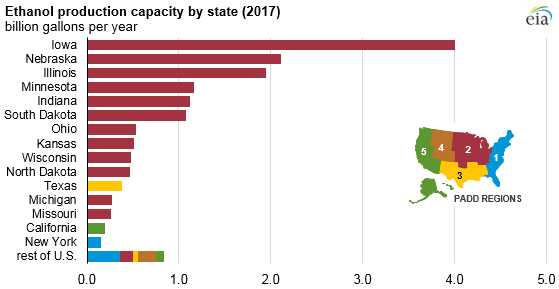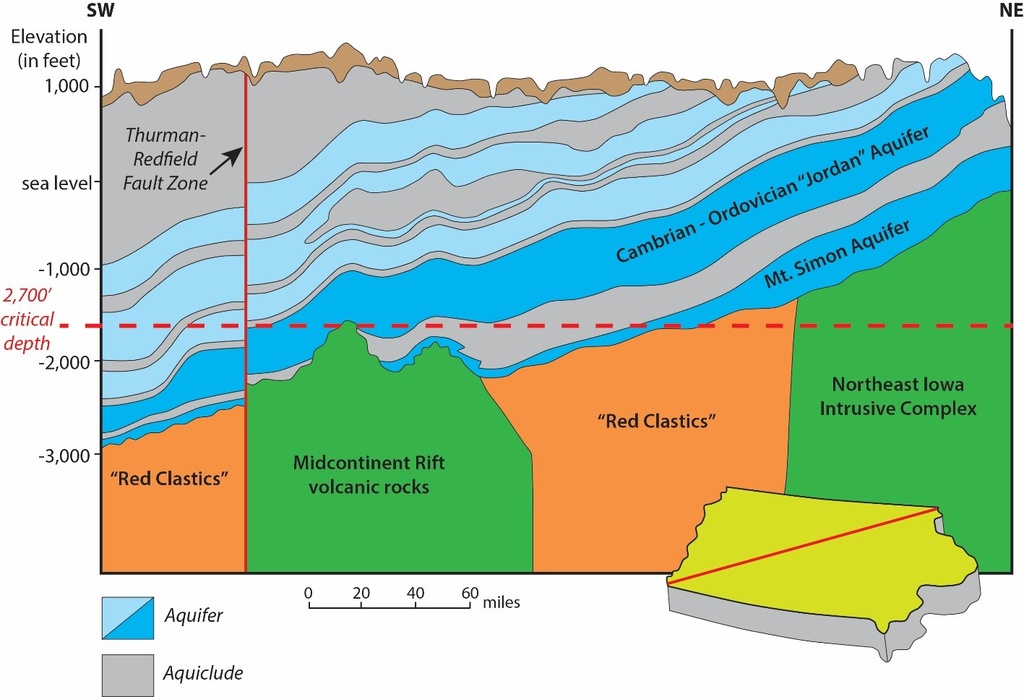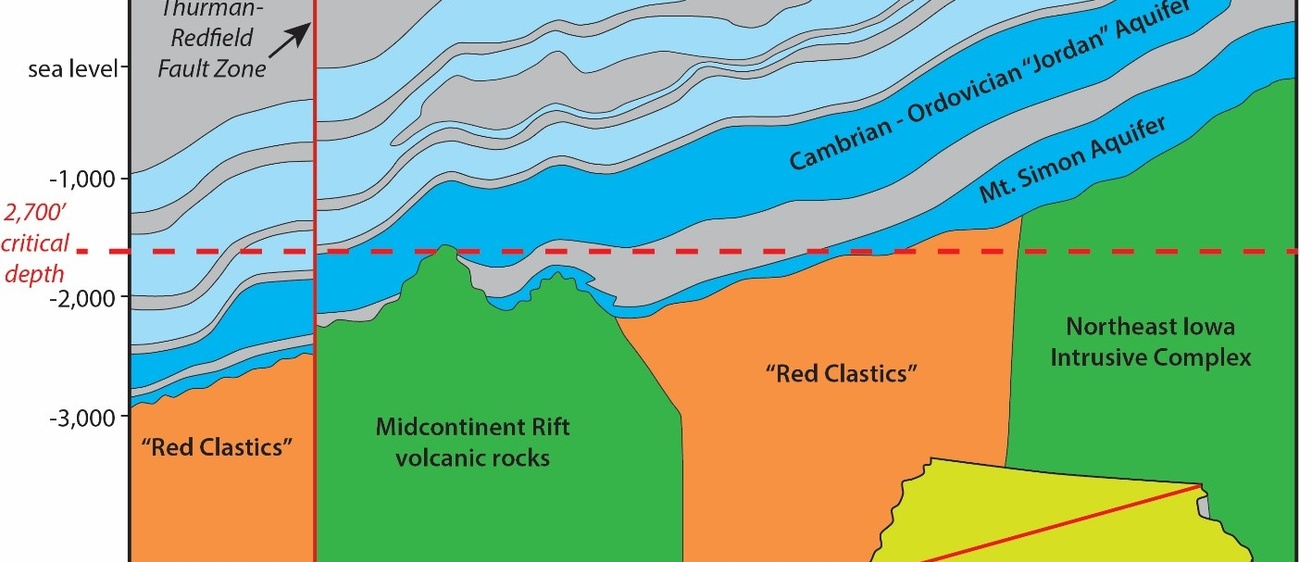Ryan Clark, Iowa Geological Survey
There has been a lot of buzz about carbon sequestration in the media lately and for good reason. With three carbon pipelines proposed to crisscross the state many Iowans are understandably skeptical of the justifications and impacts these pipelines may have. The fact is that we are in the midst of a climate crisis that is caused by greenhouse gas emissions from vehicles, power generation facilities, and other anthropogenic sources. It is imperative that we do all we can to mitigate this threat by reducing emissions as well as transitioning to renewable sources of energy. One of the many ways we can reduce emissions is by capturing carbon dioxide produced by industrial facilities before they are released into the atmosphere. This is where carbon sequestration, technically referred to as carbon capture, utilization, and storage or CCUS, comes in.

Iowa has more ethanol plants than any other state in the country (see Figure 1). Although the ethanol industry generates a relatively low percentage of total CO2 compared to other industries like coal-fired power plants, the CO2emitted by ethanol plants is nearly pure. The purity of that CO2 means there is essentially no need to refine it prior to storage. This makes ethanol plants the “low hanging fruit” of the carbon capture industry and is why these carbon pipelines are being proposed in Iowa. The issue at the center of all of this is not necessarily whether or not to capture CO2 from ethanol plants, but rather what to do with the captured CO2. There are two ways to dispose of captured CO2: enhanced oil recovery (EOR) and geologic storage. EOR is the process of injecting captured CO2 into underground petroleum reservoirs which not only stores the CO2 forever but also forces out any remaining petroleum in the reservoir that could not be recovered using conventional methods. Geologic storage is basically the same thing but the CO2 is injected into underground rock formations that do not host petroleum and hence do not lead to additional fossil fuel production. Federal tax incentives weigh these options differently, providing $35/metric ton of captured CO2 used for EOR versus $50/metric ton stored geologically. This provides some incentive to go the geologic storage route. Another more significant financial incentive for ethanol producers to capture the CO2 they emit is lowering their carbon intensity score so their product can be sold at a premium to states that have adopted low carbon fuel standards.
The proposed pipelines will likely be used to transport CO2 from Iowa ethanol plants to sites in Illinois and North Dakota that are already performing geologic storage of CO2. These two states, and several others in the Midwest, have leveraged their long history of petroleum exploration and production, and the geologic data and expertise that comes with it, into developing CO2 storage facilities. This of course took several decades of geologic research and engineering design to accomplish. However, this begs the question…
Can CO2 Be Stored in Iowa?
Despite recent comments made in the media related to these new proposed pipelines, there is the potential to store CO2 in Iowa’s deep bedrock formations. In 2018, the Iowa Geological Survey (IGS) published a report on the potential for geologic storage of CO2 in Iowa (Witzke et al., 2018). This study focused on geologic formations in southwestern Iowa for two main reasons: (1) southwestern Iowa is where the vast majority of historic petroleum exploration occurred, including the drilling of numerous deep test holes; and (2) the bedrock formations suitable for CO2 storage are deep enough (> 2,700 feet below ground) to maintain the pressures necessary to keep the CO2 in liquid form (see Figure 2). The results of the study identified several possible formations: the Cambrian-Ordovician, Mt. Simon, and “Red Clastics.” Target formations were only considered if the quality of the groundwater was too poor to be used as drinking water — otherwise known as deep saline aquifers. Although the study found that Iowa’s geology could be suitable for CO2 storage, more research is needed to appropriately assess these formations before CO2 storage can begin.
In 2020, the IGS joined a consortium of 19 other states, the Midwest Regional Carbon Initiative (MRCI), to further study whether Iowa can develop CO2 storage in the future. The MRCI is funded by grants from the U.S. Department of Energy and is led by the Illinois State Geological Survey and the Battelle Memorial Institute, a private, nonprofit applied science and technology company. The goal of the MRCI is to promote CCUS development within its region by addressing key technical challenges, collecting and sharing data, facilitating regional infrastructure planning, and conducting collaborative research.
If Iowa wants to get serious about doing its part to combat climate change then investments will need to be made to better understand the potential for geologic storage of CO2 in Iowa. Tax credits and federally funded regional consortia will only take us so far, but not likely far enough. The IGS stands ready to lead this charge while collaborating with industry partners and lawmakers to make sure that Iowans do not miss the opportunity to play an integral role in securing a better climate future for our state.

